AI Chatbot that Meets Citizens’ Needs:
Ideal Government Services Led by Design
Published June 10, 2021

Published June 10, 2021
The Japan Pension Service operates services such as collecting pension fees and providing pension funds. Inquiries from citizens tend to concentrate during application periods. This creates the challenge of how to avoid operational pressure while still providing supportive and attentive services to citizens. A way of resolving this challenge was to install a chatbot service (CHORDSHIP) that utilizes Fujitsu's AI technology on the Pension Service's website. Designers from the Fujitsu Design Center implemented a user-based design.
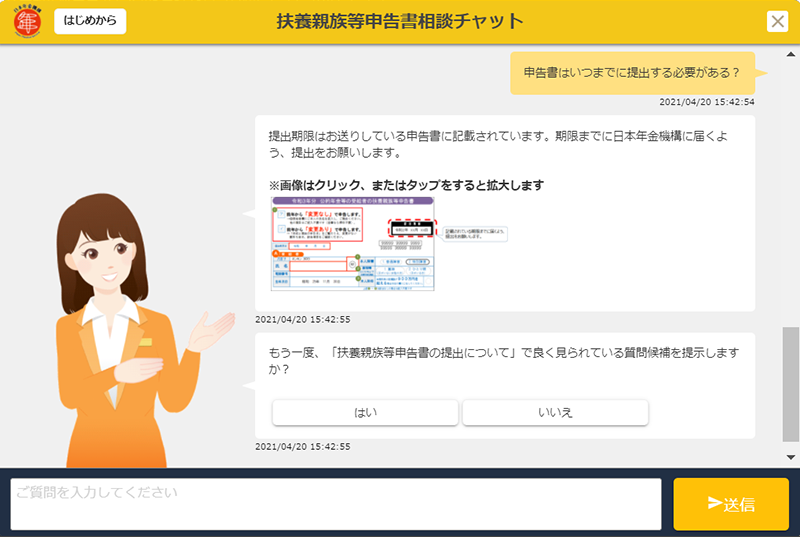 Chatbot screen
Chatbot screen"The Digital Government Implementation Plan" approved by cabinet decision in December 2019, and "the Basic Policy on Economic and Fiscal Management and Reform 2020" in July 2020 call for the quality of government services to be improved through data. The key focus here is on how to meet users' (citizens') needs.
The Japan Pension Service was also looking for a chatbot that could fully meet citizens' needs and serve as a new point of contact with them. That is why everything from the screen layout to the wording was considered using service design methodologies. The aim was to develop a user-friendly chatbot.
The project aimed to expand citizen touchpoints and began by using service design processes such as user interviews and usability tests to uncover latent needs and challenges.
Normally, about 85% of the issues within a tested range can be identified with just five usability tests. However, multiple user groups were established for this project, and around 20 tests were conducted. Based on these results, a comprehensive design was implemented. This included not only operational and visual aspects, such as action button and input form placement, the number of selections
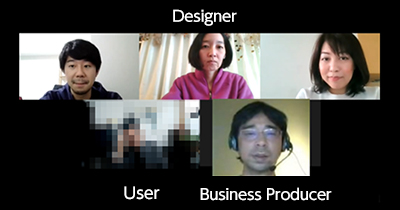 Conducting user interviews and usability test
Conducting user interviews and usability test
simultaneously displayed, and sentence length, but also factors related to user perception, such as the clarity of the terms used.
In addition to refining the chatbot's functionality, the project also emphasized optimizing from a holistic perspective, including other citizen touchpoints such as call centers and pension offices. The true goal of the project was to improve the quality of government services. The team ensured that users who could not resolve their queries solely through the chatbot could easily access other solutions. Ms. Sakai, a designer who specializes in human-centered design and ergonomics, notes, "For users, the most important thing is solving the problem at hand. So, we considered how the chatbot should be from the user's perspective."
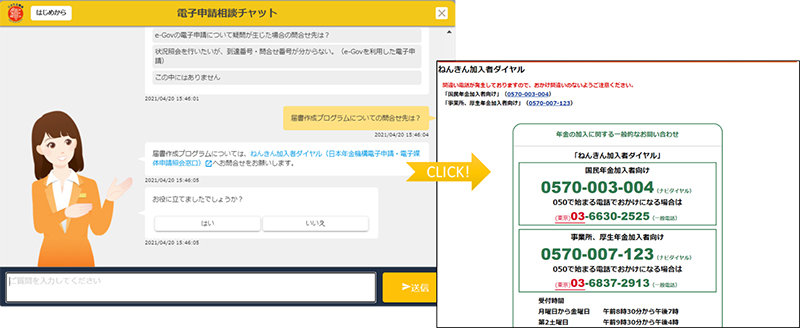 Guidance screen to call centers and other services
Guidance screen to call centers and other servicesAs of February 2021, there are six chatbot menus on the Japan Pension Service's website, including menus available for a limited time. Since September 2020, releases have been conducted in stages. Improvements have been made promptly based on post-operation verification results, with subsequent menus incorporating these enhancements.
Designer Mr. Oguro mentions "CHORDSHIP was made to be easily updated. Therefore, the service facilitates quick updates in the operation process. I feel that this strength has been leveraged in this project."
After implementing the chatbot, a 76-year-old first-time user commented that it was easy to use. Designer Ms. Morishita, who has been involved in the project from the requirements specification stage, proudly states, "We were able to consider from a designer's perspective how the service should be as an ideal citizen touchpoint, and we were able to be involved throughout the process, from scenario creation to subsequent verification and improvement. I believe this project truly demonstrated the value of service design." Operational improvements that contribute to improving the quality of government services are still ongoing.
Akiyo Morishita, Kaoru Sakai and Kotaro Oguro
Design Center
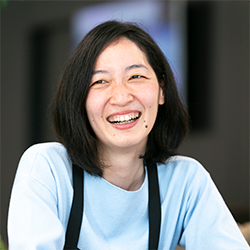 Ms. Morishita
Ms. Morishita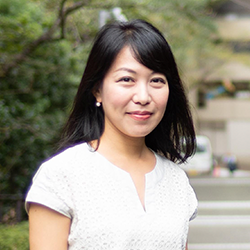 Ms. Sakai
Ms. Sakai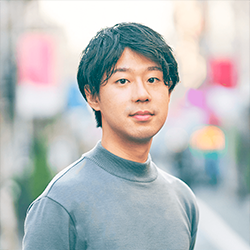 Mr. Oguro
Mr. Oguro Related Information